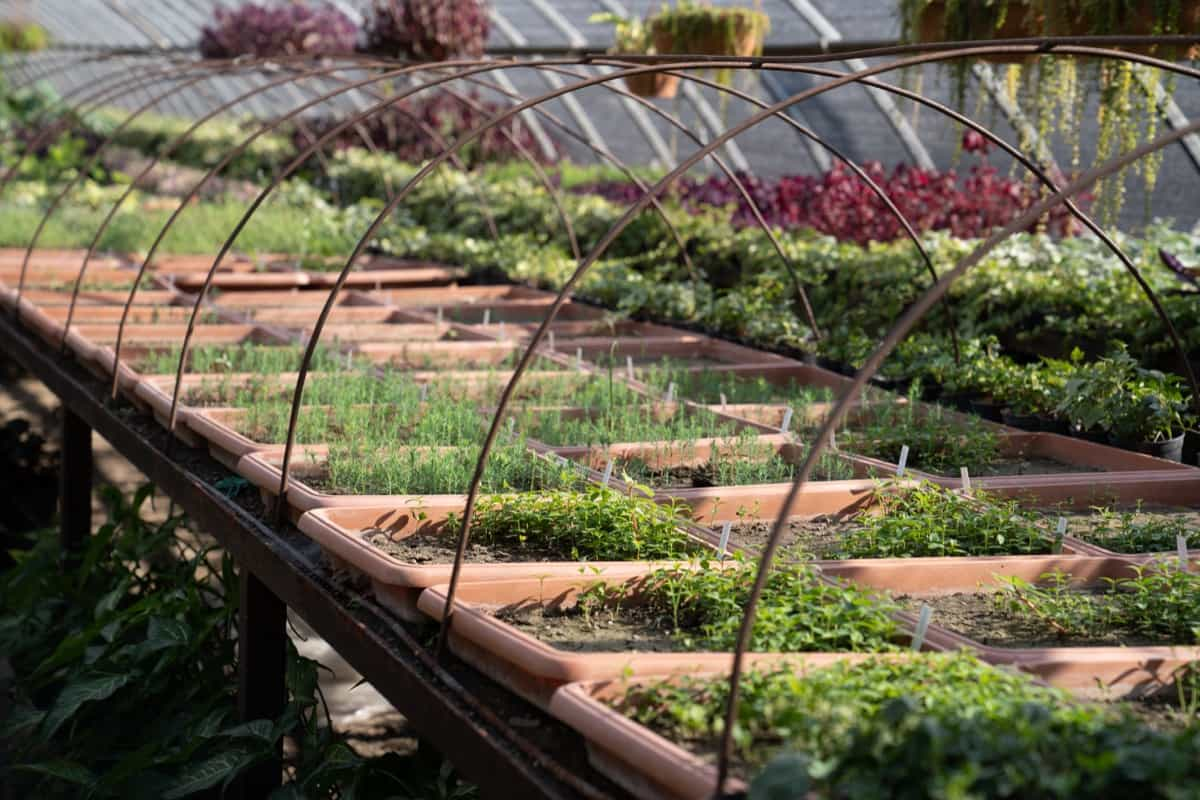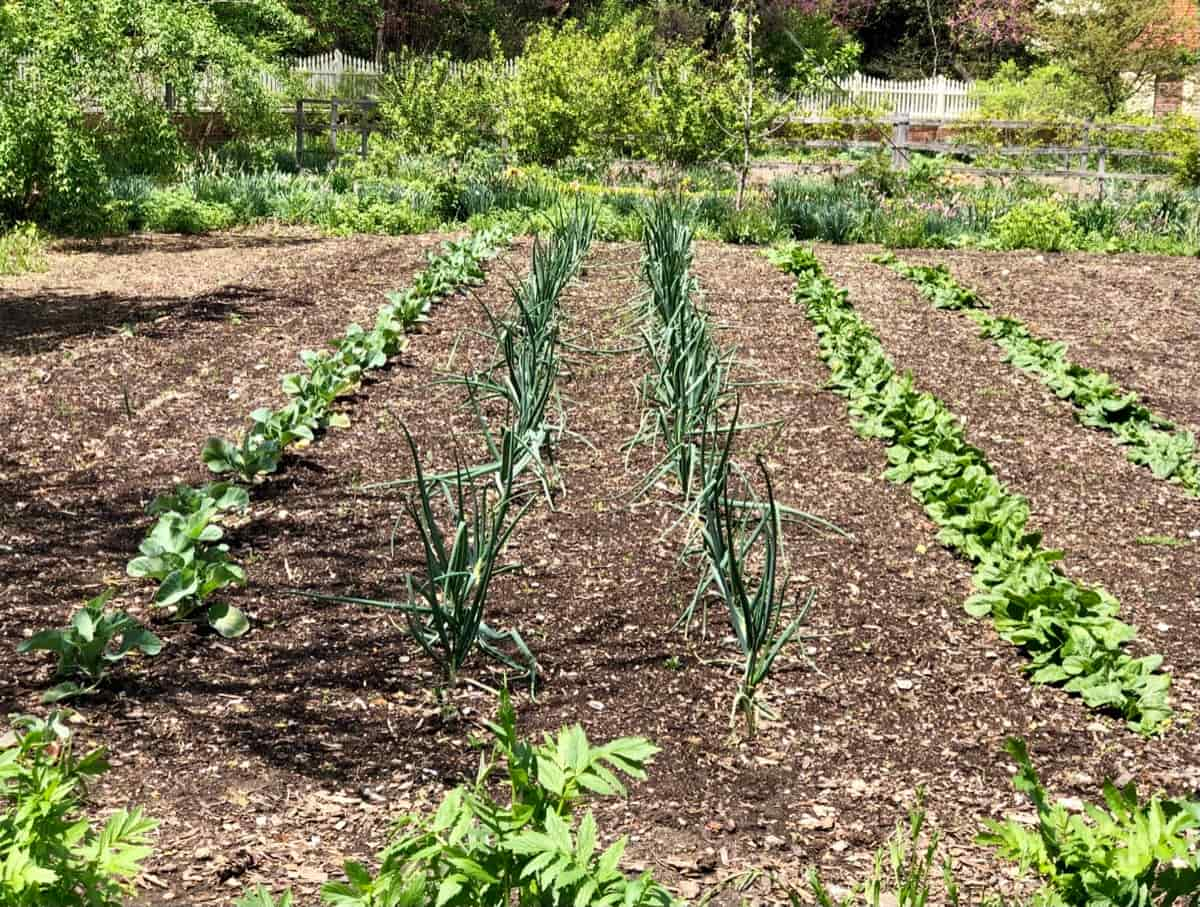If you’re considering starting a backyard vegetable garden, one of the first things you’ll need to do is decide on a layout. There are many different ways to lay out a garden, and the best option for you will depend on the size and shape of your yard and the types of vegetables you want to grow. You may consider a traditional garden with rows of vegetables if you have a large backyard. You will also need to consider the amount of sunlight your garden will receive and the type of soil you have.
Backyard Vegetable Garden Layouts
Raised Beds
You can create a backyard vegetable garden in any shape or size, but raised beds are a great option if you’re limited in space. If you build your own raised beds, ensure the lumber is untreated, so it doesn’t contaminate your soil.
In case you missed it: How to Plan a Kitchen Garden: A Step-By-Step Starting Guide for Beginners

You’ll also want to ensure the bed is at least 12 inches deep to give your plants enough room to grow. Once you’ve built or purchased your raised bed, fill it with high-quality compost and topsoil. Then, select the vegetables you want to grow and plant them according to the instructions on the seed packet. Water regularly and harvest when the vegetables are ripe.
Vertical Gardening
Vertical gardening is the best way to maximize space in your backyard vegetable garden. By growing your plants up instead of out, you can achieve a higher yield in a smaller area. Plus, vertical gardens are beautiful and add interest to your landscape. You can create a vertical garden in many different ways.
One popular method is to build a trellis or other support structure for your climbing plants. Another is to use hanging baskets or planters suspended from a frame or wall. Whatever method you choose, be sure to select plants that are well-suited for vertical growth.
Square Foot Gardening
There are many ways to lay out a backyard vegetable garden, but one of the most popular and efficient methods is square-foot gardening. This method is based on dividing your growing area into small square sections, each planted with a different type of vegetable. One advantage of square-foot gardening is that it allows you to maximize space in your garden. If you have a small backyard, this can be a great way to grow various vegetables.
Another advantage is that it can help you control your garden’s pests and diseases better. By separating different types of vegetables, you can more easily identify problems and take steps to address them. If you’re interested in trying out square-foot gardening, there are a few things to keep in mind.
First, you’ll need to choose the right size for your squares. A good rule of thumb is to make each square about 1 foot wide. Second, you must ensure you have enough soil for each square. It’s important to fill your squares with high-quality soil so that your plants will thrive. Third, decide what vegetables you want to grow in each square. When choosing plants, it’s important to consider how much space they need as they mature.
Container Gardening
When planning your backyard vegetable garden, one of the first things you must decide is what type of container to use. Container gardening is also the best way to grow vegetables, herbs, and fruits. It is also a great way to save space in your backyard. There are many different ways to lay out your container garden. Many options are available, so choosing one that best suits your needs is important. You must ensure the container is large enough to accommodate the plants you want to grow.
In case you missed it: How to Make Coffee Grounds Compost Fertilizer: Homemade Recipe, DIY for Container, Indoor, and Backyard Garden Plants

Some materials, such as plastic or metal, can be better for certain plants than others. Ensure the container has good drainage, so your plants don’t get waterlogged. You’ll need to choose a spot for your container with enough sunlight for the plants you want to grow. Decide what vegetables, herbs, and fruits you want to grow. Choose the right size containers for your plants. Add some organic matter to the soil in each container. Water your plants regularly and fertilize them monthly.
Row Gardening
One common layout for a backyard vegetable garden is the traditional row garden. This type of garden is typically long and narrow, with plants growing in rows spaced a few feet apart. Row gardens are popular because they easily set up, maintain, and efficiently use space. A row garden is a type of vegetable garden that is planted in long, narrow rows. This type of garden is easy to set up and maintain and a great option for small spaces.
Row gardens are also ideal for beginning gardeners, as they are easy to care for and do not require a lot of space or experience. A row garden is a vegetable garden where plants are grown in rows. Row gardens can be either raised beds or traditional in-ground gardens. They are typically planted in a single layer, each with its own space in the row. Row gardens are a great option for beginner gardeners or those who have limited space. They are also relatively easy to care for and can be customized to fit any size yard.
In case you missed it: How to Make Banana Peels Compost Fertilizer: Homemade Recipe, DIY for Container, Indoor, and Backyard Garden Plants

Conclusion
There are many factors to consider when planning your backyard vegetable garden layout. The most important factor is the amount of space you have available. When choosing plants for your garden, there are a few things to keep in mind. Make sure to choose plants that are compatible with each other and that will do well in the environment you have created.
Also, be sure to research how much water and sunlight each plant needs so that you can provide them with what they need to thrive. Once you have chosen the perfect plants for your garden, it is time to start planting. Be sure to follow the instructions on the seed packets or plant tags so your plants can grow healthy and strong. With patience and care, your backyard vegetable garden will soon bloom with fresh produce.
- Feed Your Flock for Less: Top 10 Tips to Save on Chicken Feed
- Ultimate Guide to Ossabaw Island Hog: Breeding, Raising, Diet, and Care
- Hatching Answers: The Top 10 Reasons Your Chickens Aren’t Laying Eggs
- Eggs and Economics: Breaking Down the Cost of Raising Backyard Chickens
- Defend Your Greens: Proven Methods to Keep Iguanas Out of Your Garden
- Ultimate Guide to Cinnamon Queen Chicken: A Comprehensive Guide for Beginners
- Ultimate Guide to California Tan Chicken: Breeding, Raising, Diet, Egg-Production and Care
- Ultimate Guide to Marsh Daisy Chicken: Breeding, Raising, Diet, and Care
- 10 Types of Chicken Farming Businesses You Can Start for Profits